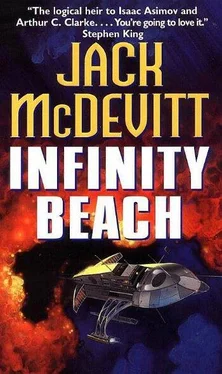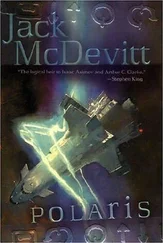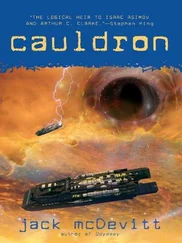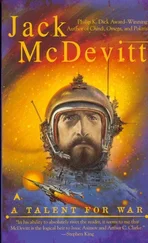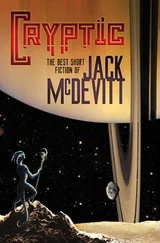She let her eyes lose focus. “I don’t know what to think. The explosion does have an antimatter signature—”
“There’s no evidence to support that.”
“The yield suggests it.”
He shook his head and let her see he’d lost confidence in her common sense. She had intended to say that the only people in the neighborhood who had a connection with antimatter were Kane and his father. But she was needlessly antagonizing him. And she didn’t know for a fact there was no one else anyhow.
“Let me get this straight,” Tripley said. “You think my father and Kane were conducting an experiment of some kind. And the experiment went wrong. Or that they were involved in a theft.”
“I didn’t say that.”
“The implication is clear enough.” He stared at her. “It didn’t happen. My father wasn’t an experimental physicist. He was an engineer. He wouldn’t have been involved in anything like that. Couldn’t have been.”
“What about Markis?”
“Kane was a starship captain .” He had settled back into his chair. “No. You can forget all that. Look, I don’t know what happened in Severin any more than anyone else does. But I know damned well it wasn’t my father playing around with a fuel cell. Chances are, it was a meteor. Plain and simple.”
“Ben,” she said, “do you have any idea whether Yoshi Amara might have been at your father’s villa around the time of the explosion?”
His gaze sharpened. “What makes you think that ? I’ve never heard that charge made before.”
She’d gone too far. What was she going to tell him? That she’d found a shoe that was her size? “There’s some indication,” she said, plunging ahead.
Tripley looked like a man dealing with gnats. “May I ask what sort of indication?”
“Clothing. It’s probably hers. No way to be sure.”
“I see.” He glanced over at the Hunter . “Sounds weak to me. Kim, I hope you aren’t going to drag it all out again. Whatever might have happened, the principals are dead.”
She nodded. “Not all the principals. Some of them are still wondering what happened to their relatives.”
He clapped his hands together. “Of course,” he said. “That’s why you look so much like Emily.”
“Yes.”
“Her sister? daughter?”
“Sister.”
“I’m sorry,” he said. “I truly am. Then you must know how I feel. But I think it’s a mutual loss that we simply have to accept.” He’d come around the desk and was escorting her to the door. “Let it go, Kim. I don’t know what happened to them any more than you do, but I’ve long since come to terms with it. I suggest you do the same.”
Worldwide Interior specialized in custom decor for executive and personal yachts and the entire range of corporate vehicles. They were fond of saying that after Interstellar put in the electronics, Worldwide added the ambiance and made every vessel into a home.
Kim was given the tour by Jacob Isaacs, the public information officer. Isaacs was in his fourth quarter, as the saying went, in excess of a hundred fifty years old. He’d begun to gray, and he walked without energy. “They think I provide dignity,” he confided to her with a smile. In fact, in a society in which almost everyone looked young, persons who’d begun to show their age were at a premium and were often given what some thought was an unfair preference in hiring and promotion.
They walked together around a virtual Hunter , while Jacob described the ship’s features. Not her sensing capabilities or her propulsion systems, but the more cosmetic qualities. Hull design and esthetic considerations. Note the balance between architrave and portico. Observe the second-floor terraces. This was a ship that could have been placed on manorial grounds in the most sedate part of Marathon and it would not have been out of place. Except, of course, for the propulsion tubes extending from the rear.
And the lander, which was connected to the ship’s underside.
She’d explained that she was working on a history of the corporate fleet during the past half century, and to this end she’d become interested in Worldwide. How had they gotten started refurbishing spacecraft interiors?
“The founder, Ester DelSol, started in food distribution. DelSol and Winnett.” Isaacs looked at Kim as if she should have recognized the firm. She nodded as though she did. “The story is that she took a flight to Earth to visit her family and noticed how bad the onboard food was. And she saw her chance. She took over the franchise and provided the carriers first-class cuisine at reasonable prices. One thing led to another. There were plenty of corporations around to service engines and handle electronics, but the carriers themselves had to take care of the cosmetic stuff. It was expensive but necessary and it was done on a hit-or-miss basis.”
“And now you’re into all kinds of shipboard furnishings.”
“And exteriors. The cosmetics, that is. We don’t do food anymore, by the way. That was sold off years ago. But we handle pretty much everything else.”
He took her down to operations to see the ship itself. It floated just off the wheel, connected by a support structure. A couple of technicians were replacing an antenna. “Is it going somewhere?” asked Kim.
“Tomorrow. It’s bound for Pacifica.”
They strolled over to the entry tube. “Did you want to look inside?”
“Please.”
They went through the air lock and emerged on the main floor, in a gallery lined by a dozen doors. A foldback staircase mounted to the upper level. Another, directly opposite, descended to the lower.
The interior was elegant. Carpeting and furniture were of the highest order. Fixtures had the feel of silver. Windows were curtained, appointments polished, walls decorated with photos from the Hunter’s recent past. She found nothing related to the ship’s days with the Tripley Foundation. And it was impossible not to contrast the Hunter with the drab, spartan vehicles that the Institute used to transport its technicians around the stellar neighborhood.
The mission control center took up much of the main floor. They inspected it, looked into the dining room and the rec area.
The pilot’s room was upstairs. They went up and she stood before it, feeling the tug of history. Markis Kane’s last mission as a starship captain. Inside, a pair of leather chairs faced a control panel and a set of screens. She went in and sat down in the left-hand chair, the pilot’s position.
The rest of the upper floor was dedicated to living quarters. She wondered which cabin had belonged to Emily.
The utility area, which housed cargo, storage, and life support, was located on the bottom floor. It was spacious, considering the modest dimensions of the vehicle, and divided into five airtight compartments and a central corridor running the spine of the ship. “Kile Tripley knew from the beginning that he wanted the capacity to make long flights,” said Isaacs. “So the Hunter has lots of storage capacity, as you can see. It’s also got a water refiltering system that, when it was built, was far ahead of its time.”
There was a cargo hold on either side of the passageway. Each had its own loading door, its own crane, its own sorter, and movable decks. Jacob showed her the refrigeration compartment. “We don’t use much of this space anymore,” he said. “Don’t really need it on commuter flights.”
The portside loading door was as broad as the compartment into which it opened. “Tripley always believed he’d find a ruin out there somewhere, some kind of place not built by us. By people . And he wanted to be able to bring back pieces of it and not be hindered by the size of his doors.”
Читать дальше
